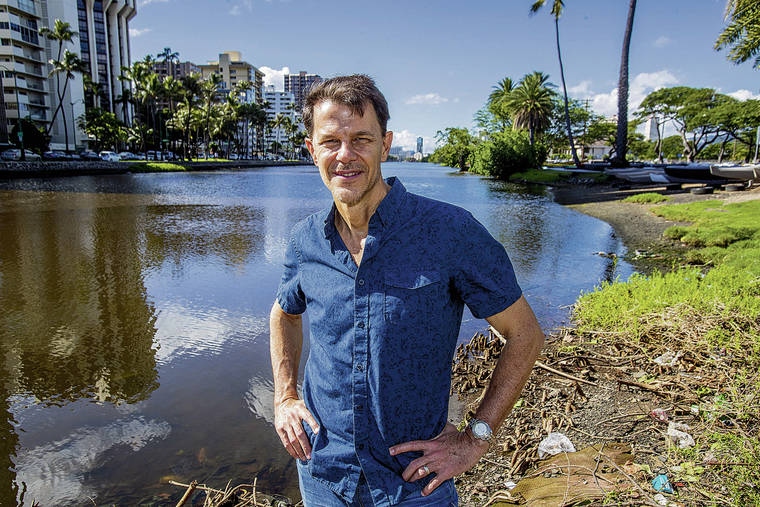The state Department of Health’s familiar beachwater bacteria notifications and brown-water advisories are issued several times a year when heavy rain or even big waves cause polluted runoff, such as happened Monday on Oahu’s North Shore.
But no matter what the weather, when it comes to wastewater, “Hawaii has a very big problem: more than 88,000 cesspools that discharge over 53 million gallons of raw sewage into the ground every day, harming drinking water resources, streams and coastal waters,” said Stuart Coleman, executive director of the nonprofit Wastewater Alternatives & Innovations.
It’s now illegal to install a cesspool in Hawaii, and a 2017 state law, Act 125, mandates that all cesspools in the state be converted to better systems by 2050, Coleman said in an interview.
But many homeowners do not know about the mandate or what their options are, he added.
WAI will hold an “Innovations in Sanitation” meeting from 1:30 to 6:30 p.m. today at the Pacific Club with presentations by policymakers, engineers, community organizations and wastewater professionals. In-person attendance is by invitation only, with COVID-19 restrictions in place, but the public is encouraged to view the free event online.
While it’s well known that exposure to sewage-contaminated recreational waters can cause gastrointestinal illnesses in swimmers, sewage can also leach into groundwater and drinking water sources, and contains nutrients such as nitrogen “that can kill coral reefs and have been linked to cancer in people,” Coleman said, referencing a 2018 Danish study published in Science Daily showing that people with nitrogen in their drinking water have higher rates of colorectal cancer.
WAI is working with the Department of Hawaiian Homelands to convert cesspools on its lands, and in July, Coleman visited New York’s Shinnecock Indian Tribe in Suffolk County, Long Island, the only place in the U.S. with more cesspools per its 1.2 million population than Hawaii, he said.
“Like Hawaii, they depend on their aquifer for their water supply, which now has elevated nitrogen levels, and studies show they have the highest colorectal cancer rates in the country.”
WAI outlines three ways to start solving Hawaii’s wastewater problems:
>> Expand sewering to rural areas — the most expensive and disruptive option, costing at least $1 million a mile.
>> Replace cesspools with individual wastewater systems, or septic systems, which need a leach field where effluent can be pumped and filtered.
>> Install an aerobic treatment unit, or ATU, which is “like a mini municipal treatment plant in your home,” Coleman said, cleaning wastewater through aeration, bubbles and microbes. It also requires a leach field.
Obstacles include the lack of enough land for a leach field, and a cost of $25,000 up to $40,000, if a home is near a water body.
In addition to the “Potty Portal,” WAI has started a town-hall series, and has held meetings with over 50 attendees in Kahaluu and Waimanalo, resulting in formation of citizen leadership groups to help push for government funding and to reduce requirements for leach field size.
WAI is also pushing for regulations requiring that cesspools be converted before a home is sold.
WAI’s website also features a new, interactive online “Potty Portal” guide to converting a cesspool, and a $4,000, plumbing-free Cinderella Incinerator Toilet, billed as 100% pathogen-free and odorless.
There are incinerator toilet pilot projects at the Hawai‘i Institute of Marine Biology on Coconut Island and a farm at Kuilima on the North Shore, and WAI is working with the state Department of Land and Natural Resources to install them in Kokee and Kalalau Valley on Kauai.
“We really are on the verge of a wastewater revolution,” Coleman said.
GET INVOLVED
To view today’s meeting, go to:
us02web.zoom.us/j/86411341901 Opens in a new tab
For more information, visit:
waicleanwater.org Opens in a new tab

